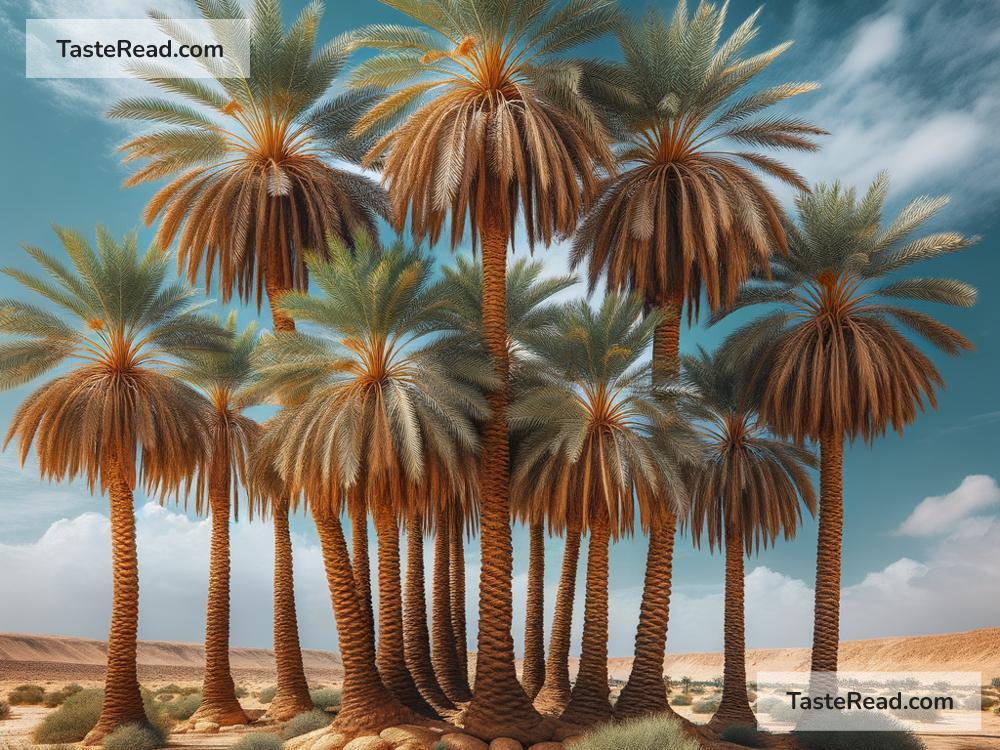Why Dates Grow in Arid Regions
Dates are one of the oldest fruits known to humanity. They have been cultivated for thousands of years and hold a special place in many cultures and cuisines, particularly in the Middle East, North Africa, and South Asia. If you’ve ever wondered why dates grow in arid regions, this article will explain how this miracle fruit thrives in harsh, dry climates.
What Are Dates?
Dates are the fruit of the date palm tree, scientifically known as Phoenix dactylifera. The tree grows tall and is easily recognizable by its large, feather-like leaves. Dates are sweet and rich in nutrients. They are often eaten fresh or dried and used in desserts, snacks, and even savory dishes.
Date palms are unique because they are adapted to survive and produce fruit in one of the world’s harshest environments: arid and desert regions. But how does a plant manage to thrive in climates that face intense heat, limited rainfall, and nutrient-poor soil? It all comes down to the remarkable biology of the date palm.
Why Do Dates Grow in Arid Regions?
1. Adaptation to Heat
Arid regions are known for their scorching temperatures, especially during the day. While many plants struggle in extreme heat, date palms have adapted to handle it. Their tall trunks help lift the leaves and fruit off the ground, reducing exposure to the hot desert surface heat. Furthermore, their leaves are designed to conserve moisture by reducing evaporation.
Another fascinating feature is how date tree leaves fold slightly during extreme heat. This limits sunlight exposure, helping the tree manage the intense rays of the sun. Their ability to thrive in temperatures that can exceed 40-50°C (104-122°F) is one of the main reasons dates grow so well in arid regions.
2. Deep Roots to Find Water
Arid regions often have very little rainfall, and the water levels are far below the surface. To survive, the date palm grows incredibly deep roots that seek groundwater. These roots act like nature’s water pump, pulling up precious water from below the soil and allowing the tree to thrive even in extremely dry conditions.
Even when there is minimal water available, the tree focuses its resources on producing fruit. This is one of the unique characteristics that has made the date palm so successful in deserts and semi-deserts over centuries.
3. Tolerance to Salty Soil
In many arid regions, the soil contains higher levels of salt due to evaporation. Most crops find it challenging to grow in salty soil because salt can interfere with water absorption. However, date palms are highly salt-tolerant. They are able to withstand saline conditions and continue to produce fruit.
This tolerance makes date palms one of the best crops for desert agriculture, where other plants may fail due to poor soil quality.
4. Efficient Water Usage
Date palms are incredibly water-efficient. Unlike other plants that may require large amounts of water to grow, date palms use their limited water supply carefully. Every drop is maximized to help the tree grow and produce fruit.
Farmers in arid regions often rely on irrigation systems to grow crops. Date palms can thrive with minimal irrigation, making them an ideal crop for water-scarce environments.
5. Protection from Harsh Conditions
The structure of the date palm tree also helps protect the fruit from the harsh desert conditions. The fruit is grouped tightly together, shielded by the leaves and fibrous coverings. This keeps the dates safe from strong winds and scorching heat.
6. Pollination in Dry Winds
Arid regions tend to have dry, gusty winds. Interestingly, these winds play an important role in pollinating date palm flowers. Male date palms produce pollen, which is carried by the wind to female trees, leading to fruit production. This natural process helps ensure the growth of dates in areas otherwise hostile to plant life.
Why Are Dates Important for Desert Communities?
Dates are not just a fruit; they are a lifeline for many people living in arid regions. Here are some reasons why dates are so valuable:
-
Food Source: Dates are packed with energy, vitamins, and minerals. They provide sustenance in regions where other crops may not grow.
-
Economy: Many desert communities depend on date production for income. Dates are exported worldwide and are in high demand because of their nutritional value and versatility.
-
Shade and Shelter: Date palm trees provide shade in scorching desert heat, making life more comfortable. Their tall leaves can also be used to build roofs or fences.
-
Water Management: Because date palms need less water to grow, they are great for conserving resources in areas where water is scarce.
Conclusion
Dates are truly a gift of nature, uniquely suited to arid regions. Their ability to withstand heat, flourish in salty soil, and use limited water efficiently makes them one of the most resilient crops in the world. For centuries, they have provided nutrition, income, and hope to desert communities.
So the next time you enjoy a sweet, chewy date, take a moment to appreciate its journey from the arid desert to your plate. It’s not just a fruit—it’s a testament to survival, adaptation, and the incredible ways nature finds solutions to challenges.


